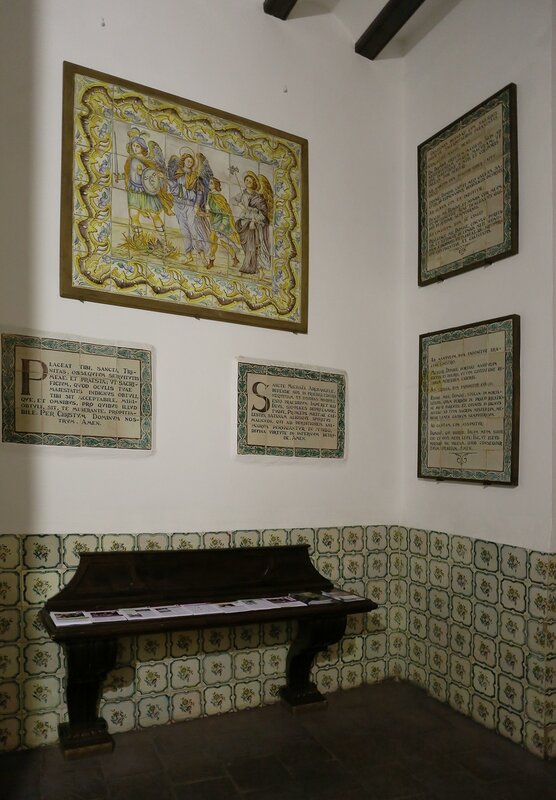Valencia. St. John's Church (Iglesia de San Juan del Hospital)
Located around the corner of the temple of Thomas and Philip ChurchSan Juan del ospital (Iglesia de San Juan del Hospital on the map) was also closed on the occasion of the New year. After studying the schedule, I decided to return here tomorrow evening.

It should be said that the entrance to the temple is located atypically - the apse of the altar part opens onto the street.

After entering the doors (they are never open to swing), we will pass through the portico-chapel


then you will see the inner "courtyard of the way of the Cross" (Patio del Via Crucis). You can pay attention to the stonework of the building of the 14th century, and the brick bell tower, added in the 17th century.

The
narthex (narthex), also located unconventionally - on the side of the
nave, occupies part of the building of the former monastic hospital. Here are the confessional booths.

The room reminded me of a Soviet-era meeting point -
telephone booths and benches for waiting people - the connection had to
wait for hours.

The
history of the Church dates back to 1238, when the Aragonese king Jaime
I the Conqueror granted the knights of the order of St. John of
Jerusalem (Hospitallers) a place for a monastery in Valencia, which was
liberated from the Moors. This
was a sign of gratitude to the order for military and material support
By 1261, the Hospitallers built a monastery, which included, in addition
to the Church, as well as a hospital and cemetery for deceased
patients. The main nave, in the tradition of the Hospitallers, has almost no decoration - stone walls, sometimes decorated with paintings.

The
chapel of St. Barbara (Capilla de Santa Bárbara), built in the Baroque
style in 1685-1689, is radically different from the ascetic Gothic main
nave. The author of the project is Juan Bautista Pérez Castiel. In addition to the magnificent decoration, the
chapel is notable for the fact that the ashes of the Greek Empress
Constanza of Hohenstaufen (Constanza Augusta), who lived her last years
in Spain, with her niece, the mother of king Jaime II of Aragon, rest
here.
